Red Sox Outfield: For 2007, the Red Sox boast
 of an outfield that should account for a ton of Boston runs if they can stay healthy and happy, which may be a tall order. Patrolling left field for his seventh season in Boston will be one of the most feared hitters in baseball in Manny Ramirez. A career .314 hitter with 470 homeruns, Ramirez led the team in 2006 with his .321 average. As long as Ramirez doesn’t spend a considerable amount of time on the disabled list, you can put down 100 RBI and 30 homeruns under his stat sheet in ink, though he is plenty capable of 40 plus homers and 125 RBI. I also believe that Ramirez is highly underrated on defense. Sure, sometimes he seems a little flaky on the field, but I’m will to forgive him for that for all the spectacular plays he can make. His arm strength and accuracy or both surprisingly decent, and he can get rid of the ball very quickly. Emotionally, Ramirez is hardly the most stable player on the roster. For what seems like the twentieth time since he signed with the Sox, Manny requested to be traded this off-season, and once again the front office failed to find a suitable deal. Also, Ramirez seemed to break down both emotionally and physically toward the end of last season, and many fans and writers speculated that he wasn’t giving Boston his best effort down the stretch. Still, no other hitter on the team is capable of offering David Ortiz the lineup protection that he needs while still do his own offensive damage. The two make for the best 3-4 combo in baseball, and I’m glad to see that they’ll be back at it in 2007.
of an outfield that should account for a ton of Boston runs if they can stay healthy and happy, which may be a tall order. Patrolling left field for his seventh season in Boston will be one of the most feared hitters in baseball in Manny Ramirez. A career .314 hitter with 470 homeruns, Ramirez led the team in 2006 with his .321 average. As long as Ramirez doesn’t spend a considerable amount of time on the disabled list, you can put down 100 RBI and 30 homeruns under his stat sheet in ink, though he is plenty capable of 40 plus homers and 125 RBI. I also believe that Ramirez is highly underrated on defense. Sure, sometimes he seems a little flaky on the field, but I’m will to forgive him for that for all the spectacular plays he can make. His arm strength and accuracy or both surprisingly decent, and he can get rid of the ball very quickly. Emotionally, Ramirez is hardly the most stable player on the roster. For what seems like the twentieth time since he signed with the Sox, Manny requested to be traded this off-season, and once again the front office failed to find a suitable deal. Also, Ramirez seemed to break down both emotionally and physically toward the end of last season, and many fans and writers speculated that he wasn’t giving Boston his best effort down the stretch. Still, no other hitter on the team is capable of offering David Ortiz the lineup protection that he needs while still do his own offensive damage. The two make for the best 3-4 combo in baseball, and I’m glad to see that they’ll be back at it in 2007. In center field the Sox will return young and talented Coco Crisp. Crisp didn’t exactly live up to his expec- tations in 2006, leaving many fans clamoring for a trade. But keep in mind that he injured his finger early in the season and never quite got his swing back even when he returned from the DL. He ended the season hitting .264 with 8 home runs and a .317 on-base percentage - not exactly the kind of numbers Boston is looking for in their leadoff hitter. Yet if you go back to 2005 you’ll see that Crisp hit .300 with 16 homers and a .345 on-base percentage. He’s also one of two switch-hitters in the everyday lineup (the other being Jason Varitek), adding to his versatility. If he can bounce back from last year’s injuries, Crisp should do just fine this year. He won’t be asked to bat leadoff (as the Sox acquired Julio Lugo to fill that role), so in the number eight slot the speedy outfielder should do some damage at the plate and on the base-paths. Crisp is a very solid defender, capable of getting to a ton of balls with his speed and making a ton of great plays with his athleticism, but his arm strength is a little below average. He still made one of the most spectacular plays in the major leagues last year when he stabbed a David Wright sinking line drive while literally soaring through the air parallel to the ground, saving the game for Boston. There’s no doubt in my mind that Crisp will improve in his sophomore season with Boston.
In center field the Sox will return young and talented Coco Crisp. Crisp didn’t exactly live up to his expec- tations in 2006, leaving many fans clamoring for a trade. But keep in mind that he injured his finger early in the season and never quite got his swing back even when he returned from the DL. He ended the season hitting .264 with 8 home runs and a .317 on-base percentage - not exactly the kind of numbers Boston is looking for in their leadoff hitter. Yet if you go back to 2005 you’ll see that Crisp hit .300 with 16 homers and a .345 on-base percentage. He’s also one of two switch-hitters in the everyday lineup (the other being Jason Varitek), adding to his versatility. If he can bounce back from last year’s injuries, Crisp should do just fine this year. He won’t be asked to bat leadoff (as the Sox acquired Julio Lugo to fill that role), so in the number eight slot the speedy outfielder should do some damage at the plate and on the base-paths. Crisp is a very solid defender, capable of getting to a ton of balls with his speed and making a ton of great plays with his athleticism, but his arm strength is a little below average. He still made one of the most spectacular plays in the major leagues last year when he stabbed a David Wright sinking line drive while literally soaring through the air parallel to the ground, saving the game for Boston. There’s no doubt in my mind that Crisp will improve in his sophomore season with Boston. For the first time since 1998 the Sox will begin this year with a new face in right field. When Trot Nixon became a free agent, the chances of him returning to the club he spent his whole career with were seen as very slim. They became non-existent after the Sox signed J.D. Drew from the Dodgers and Nixon moved on with former Sox closer Keith Foulke to become a Cleveland Indian. Fans will miss Nixon’s grittiness and competitiveness, but clearly Drew is the better player. Having spent about the same amount of time in the big-leagues (Nixon having amassed just 124 more plate appearances than Drew), Drew’s on-base percentage is 27 points higher than Nixon’s, and he has hit 29 more homeruns. He’s also scored 58 more runs and stolen 45 more bases. Drew, like Nixon, has experienced some injury troubles over the past few years, but managed a comeback for the Dodgers last season when he hit .283 with 100 RBI and 20 homeruns. Unlike Nixon, who may be declining as a player, it seems as if Drew is capable of reaching a level of play that he has not showcased as of yet because of his injuries. Defensively, Drew is as good as they come. He can play all three outfield positions, can reach just about any ball hit in his direction and has above-average arm strength. Fans in St. Louis and Las Angeles complained about Drew’s passiveness, but there’s a good chance the energy of Fenway park will help him in that area. Since he’s not expected to be the best hitter on the team, I expect Drew to do just fine for the Sox in the number five slot.
For the first time since 1998 the Sox will begin this year with a new face in right field. When Trot Nixon became a free agent, the chances of him returning to the club he spent his whole career with were seen as very slim. They became non-existent after the Sox signed J.D. Drew from the Dodgers and Nixon moved on with former Sox closer Keith Foulke to become a Cleveland Indian. Fans will miss Nixon’s grittiness and competitiveness, but clearly Drew is the better player. Having spent about the same amount of time in the big-leagues (Nixon having amassed just 124 more plate appearances than Drew), Drew’s on-base percentage is 27 points higher than Nixon’s, and he has hit 29 more homeruns. He’s also scored 58 more runs and stolen 45 more bases. Drew, like Nixon, has experienced some injury troubles over the past few years, but managed a comeback for the Dodgers last season when he hit .283 with 100 RBI and 20 homeruns. Unlike Nixon, who may be declining as a player, it seems as if Drew is capable of reaching a level of play that he has not showcased as of yet because of his injuries. Defensively, Drew is as good as they come. He can play all three outfield positions, can reach just about any ball hit in his direction and has above-average arm strength. Fans in St. Louis and Las Angeles complained about Drew’s passiveness, but there’s a good chance the energy of Fenway park will help him in that area. Since he’s not expected to be the best hitter on the team, I expect Drew to do just fine for the Sox in the number five slot.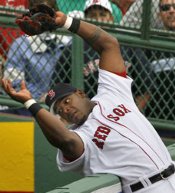 The Sox also boast of one of the most powerful young backups in the game in Wily Mo Peña. Peña will probably be an everyday starter for the Sox one day, but for 2007 Terry Francona will have to figure out how to get him into the lineup as often as possible while not depriving any of his starters any significant at-bats. Always known for his soaring longball, last season Peña also managed to bump his average up 40 points to .301 from his career batting average. Peña is capable of playing all three outfield positions, but showcased his best stuff in backing up Crisp in center last year. Also likely to see some time in the outfield this season will be Eric Hinske. Hinske is a good hitter and a decent-enough defender, but he’s more likely to catch his at-bats while playing the infield. Should anyone go down with an injury, two of the Sox’s top prospects are ready to come up to help. David Murphy is an on-base monster with good plate discipline, while Brandon Moss is full of raw power and potential at the plate. Both players are very capable defenders.
The Sox also boast of one of the most powerful young backups in the game in Wily Mo Peña. Peña will probably be an everyday starter for the Sox one day, but for 2007 Terry Francona will have to figure out how to get him into the lineup as often as possible while not depriving any of his starters any significant at-bats. Always known for his soaring longball, last season Peña also managed to bump his average up 40 points to .301 from his career batting average. Peña is capable of playing all three outfield positions, but showcased his best stuff in backing up Crisp in center last year. Also likely to see some time in the outfield this season will be Eric Hinske. Hinske is a good hitter and a decent-enough defender, but he’s more likely to catch his at-bats while playing the infield. Should anyone go down with an injury, two of the Sox’s top prospects are ready to come up to help. David Murphy is an on-base monster with good plate discipline, while Brandon Moss is full of raw power and potential at the plate. Both players are very capable defenders.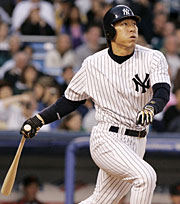 Yankees Outfield: In 2007 New York will return to play one of the best outfields in the Major Leagues. Over in left the Bombers will have one of their most consistent players in Hideki Matsui. Recovered from his nasty broken wrist (suffered in a game against the Sox) Matsui is sure to again be one of the most important pieces of an extremely potent Yankees offense. Though he managed just 172 at-bats last season, Matsui still maintained a .302 average with 8 homeruns and 29 RBI. Before the injury, Hideki had never missed a game in all his time in the Major Leagues. In his four years in the US (all with the Yankees), Matsui has hit at a .297 click with 78 homeruns and 359 RBI, along with his nifty .372 on-base percentage. Assuming Matsui really is healthy, he’s all but guaranteed to hit 25 homers and knock in 100 runs in 2007. A huge asset at the plate, Matsui is somewhat overrated on defense. He doesn’t take the best routes to balls and his arm is pretty weak. Still, he doesn’t make a ton of mistakes on the field, which is something we can’t exactly say about Ramirez.
Yankees Outfield: In 2007 New York will return to play one of the best outfields in the Major Leagues. Over in left the Bombers will have one of their most consistent players in Hideki Matsui. Recovered from his nasty broken wrist (suffered in a game against the Sox) Matsui is sure to again be one of the most important pieces of an extremely potent Yankees offense. Though he managed just 172 at-bats last season, Matsui still maintained a .302 average with 8 homeruns and 29 RBI. Before the injury, Hideki had never missed a game in all his time in the Major Leagues. In his four years in the US (all with the Yankees), Matsui has hit at a .297 click with 78 homeruns and 359 RBI, along with his nifty .372 on-base percentage. Assuming Matsui really is healthy, he’s all but guaranteed to hit 25 homers and knock in 100 runs in 2007. A huge asset at the plate, Matsui is somewhat overrated on defense. He doesn’t take the best routes to balls and his arm is pretty weak. Still, he doesn’t make a ton of mistakes on the field, which is something we can’t exactly say about Ramirez. In center for the Yankees will be everyone’s favorite traitor, Johnny Damon. Despite all the boos he will continue to get in Fenway Park, Damon was and is one of the best leadoff hitters in the game. He put up good numbers in 2006, with a .285 average, 80 RBI, and a career best 24 home runs. His average and on-base percentage (.359) decreased from what he had produced in his last two years in Boston, but he also stole 25 bases, which he hadn’t done since 2003. He missed 600 at-bats for the first time since 1999, but just barely (593) and he played much of the year with a broken bone in his foot. No matter what, Damon will continue to be a spark at the top of a very flammable lineup. He’s a lock for 100-plus runs and will also knock more runs in than most other leadoff hitters in the league. Roaming center, Damon is quick and willing to sacrifice his body to make a play, but his throwing arm is a joke. By no means is he a bad defender, but you won’t see any gold gloves on his mantle anytime soon.
In center for the Yankees will be everyone’s favorite traitor, Johnny Damon. Despite all the boos he will continue to get in Fenway Park, Damon was and is one of the best leadoff hitters in the game. He put up good numbers in 2006, with a .285 average, 80 RBI, and a career best 24 home runs. His average and on-base percentage (.359) decreased from what he had produced in his last two years in Boston, but he also stole 25 bases, which he hadn’t done since 2003. He missed 600 at-bats for the first time since 1999, but just barely (593) and he played much of the year with a broken bone in his foot. No matter what, Damon will continue to be a spark at the top of a very flammable lineup. He’s a lock for 100-plus runs and will also knock more runs in than most other leadoff hitters in the league. Roaming center, Damon is quick and willing to sacrifice his body to make a play, but his throwing arm is a joke. By no means is he a bad defender, but you won’t see any gold gloves on his mantle anytime soon.The Yankees made perhaps their best move for the 2007 season in the middle of 2006 with
 their deadline trade to bring in Corey Lidle and Bobby Abreu from the Phillies for four prospects. Tragically, Lidle was killed in a plane crash during the offseason, but Abreu looks to but a productive middle-of-the-order bat for the Yankees. Though his power may be on the downslide, Abreu is a contact hitter with a career .919 on-base plus slugging percentage. After his trade to New York he maintained a .330 average and a .419 on-base percentage. Abreu is quick on the base-paths too, having stolen a total of 30 bases last year. However, I’m not as high on Abreu as many other writers seem to be. Granted, you don’t have to hit 40 homeruns to succeed in the Yankees lineup, but Abreu isn’t getting any younger and it seems as though his power-hitting days are behind him. Most likely, his base-stealing and good defense days aren’t too far behind. The best thing Abreu brought to the team was the opportunity to trade Gary Sheffield and get a mess of pitching in return. That said, he was one of the only Yankees to perform in the post-season, and he’ll be the best defensive outfielder of the bunch. I don’t expect him to bat third all season, though.
their deadline trade to bring in Corey Lidle and Bobby Abreu from the Phillies for four prospects. Tragically, Lidle was killed in a plane crash during the offseason, but Abreu looks to but a productive middle-of-the-order bat for the Yankees. Though his power may be on the downslide, Abreu is a contact hitter with a career .919 on-base plus slugging percentage. After his trade to New York he maintained a .330 average and a .419 on-base percentage. Abreu is quick on the base-paths too, having stolen a total of 30 bases last year. However, I’m not as high on Abreu as many other writers seem to be. Granted, you don’t have to hit 40 homeruns to succeed in the Yankees lineup, but Abreu isn’t getting any younger and it seems as though his power-hitting days are behind him. Most likely, his base-stealing and good defense days aren’t too far behind. The best thing Abreu brought to the team was the opportunity to trade Gary Sheffield and get a mess of pitching in return. That said, he was one of the only Yankees to perform in the post-season, and he’ll be the best defensive outfielder of the bunch. I don’t expect him to bat third all season, though.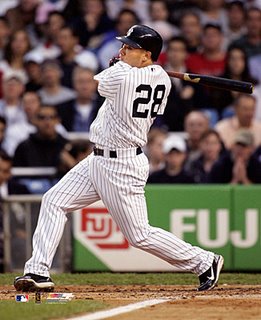 The Yankees, too, have a pretty capable backup outfielder in Melky Cabrera. With Matsui and Sheffield going down with major injuries in 2006, Cabrera saw a good amount of playing time. In is 460 at-bats he logged a .280 average with 7 homers, 12 stolen bases, 50 RBI, and a .360 on-base percentage. Chances are he won’t get anywhere near 400 chances in 2006 (unless there’s another major injury in the outfield) so I expect most of his numbers to take a dip as a result. He proved his defensive foibles in his 2005 debut were merely freshman jitters, and he made a spectacular play or two, but he’s no Ichiro Suzuki out there. You can also expect to see Kevin Reese and Kevin Thompson see a bit of playing time for the Yankees this season, though all the talent ahead of them will prevent them from doing much until September call-ups. If the Yankees experience another crippling injury in the outfield as they did last year, they will solve the problem in the same way by trading for an experienced major leaguer rather than trusting their unproven prospects.
The Yankees, too, have a pretty capable backup outfielder in Melky Cabrera. With Matsui and Sheffield going down with major injuries in 2006, Cabrera saw a good amount of playing time. In is 460 at-bats he logged a .280 average with 7 homers, 12 stolen bases, 50 RBI, and a .360 on-base percentage. Chances are he won’t get anywhere near 400 chances in 2006 (unless there’s another major injury in the outfield) so I expect most of his numbers to take a dip as a result. He proved his defensive foibles in his 2005 debut were merely freshman jitters, and he made a spectacular play or two, but he’s no Ichiro Suzuki out there. You can also expect to see Kevin Reese and Kevin Thompson see a bit of playing time for the Yankees this season, though all the talent ahead of them will prevent them from doing much until September call-ups. If the Yankees experience another crippling injury in the outfield as they did last year, they will solve the problem in the same way by trading for an experienced major leaguer rather than trusting their unproven prospects.The Bottom Line: It’s close, but the Red Sox have a quite few more question marks than the Yankees. Manny Ramirez is a more valuable hitter than any single Yankee outfielder, but as a group the Yankees will produce more than the Red Sox. The Red Sox are better on defense, but not by leaps and strides. One thing the Sox have over the Yankees is greater outfield depth, and better prospects at the position, but chances are this won’t come into play in 2007. All around, the Yankees trump the Red Sox in the outfield, but it’s a battle to the finish.


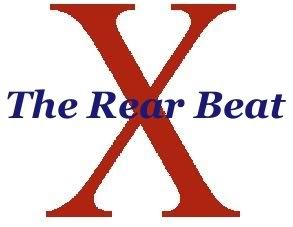
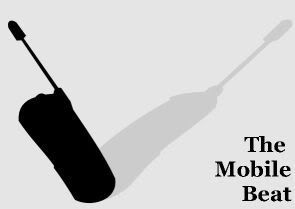
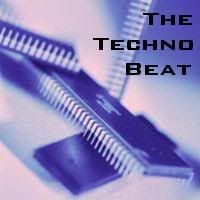
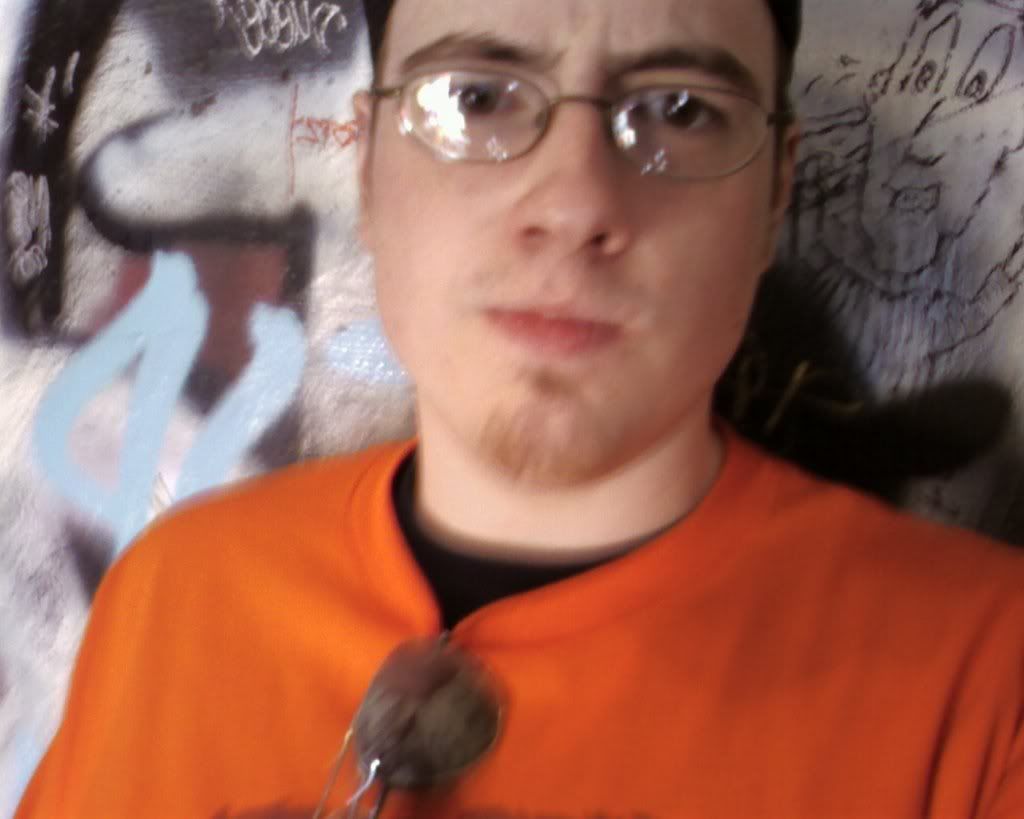

No comments:
Post a Comment